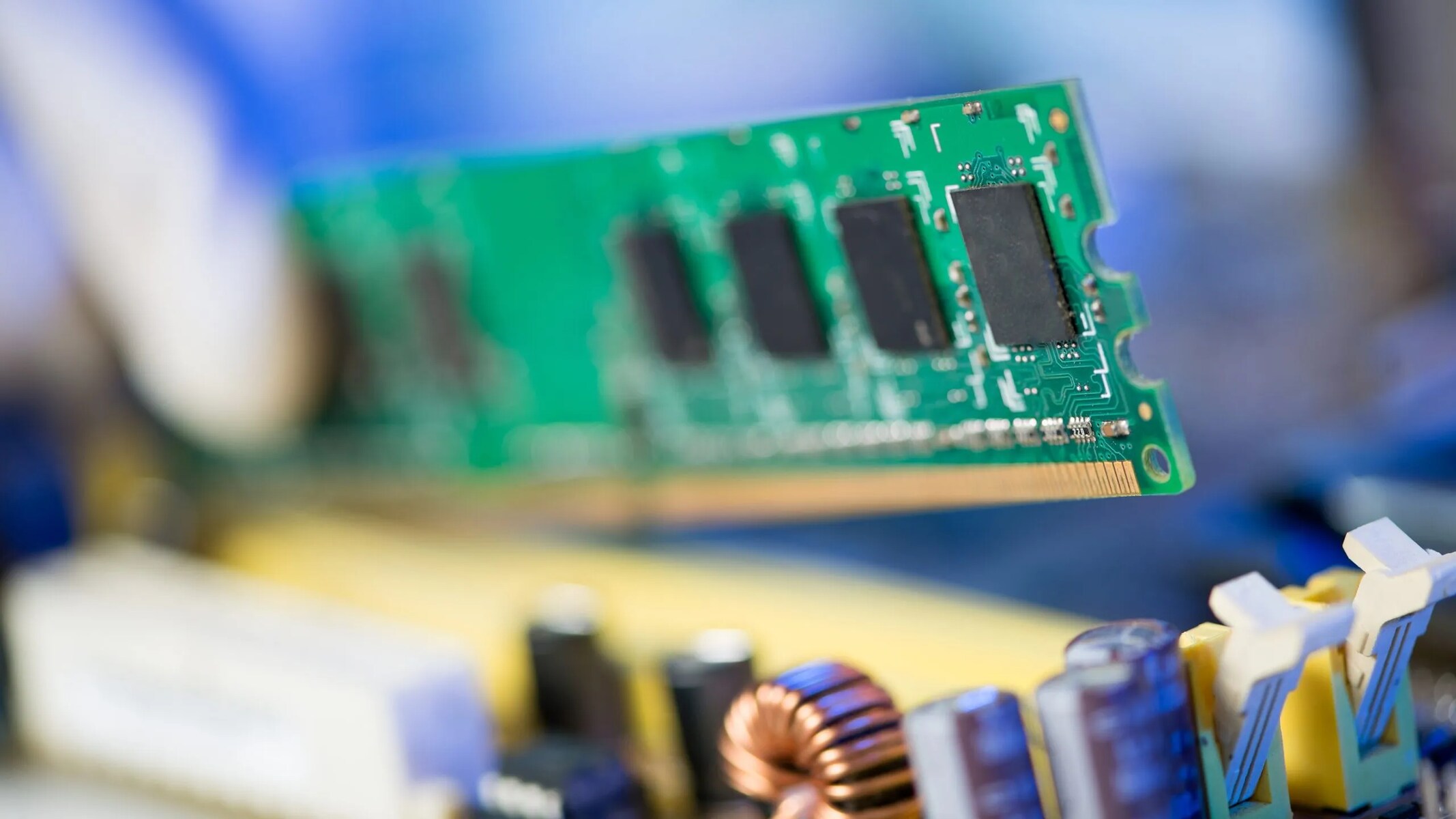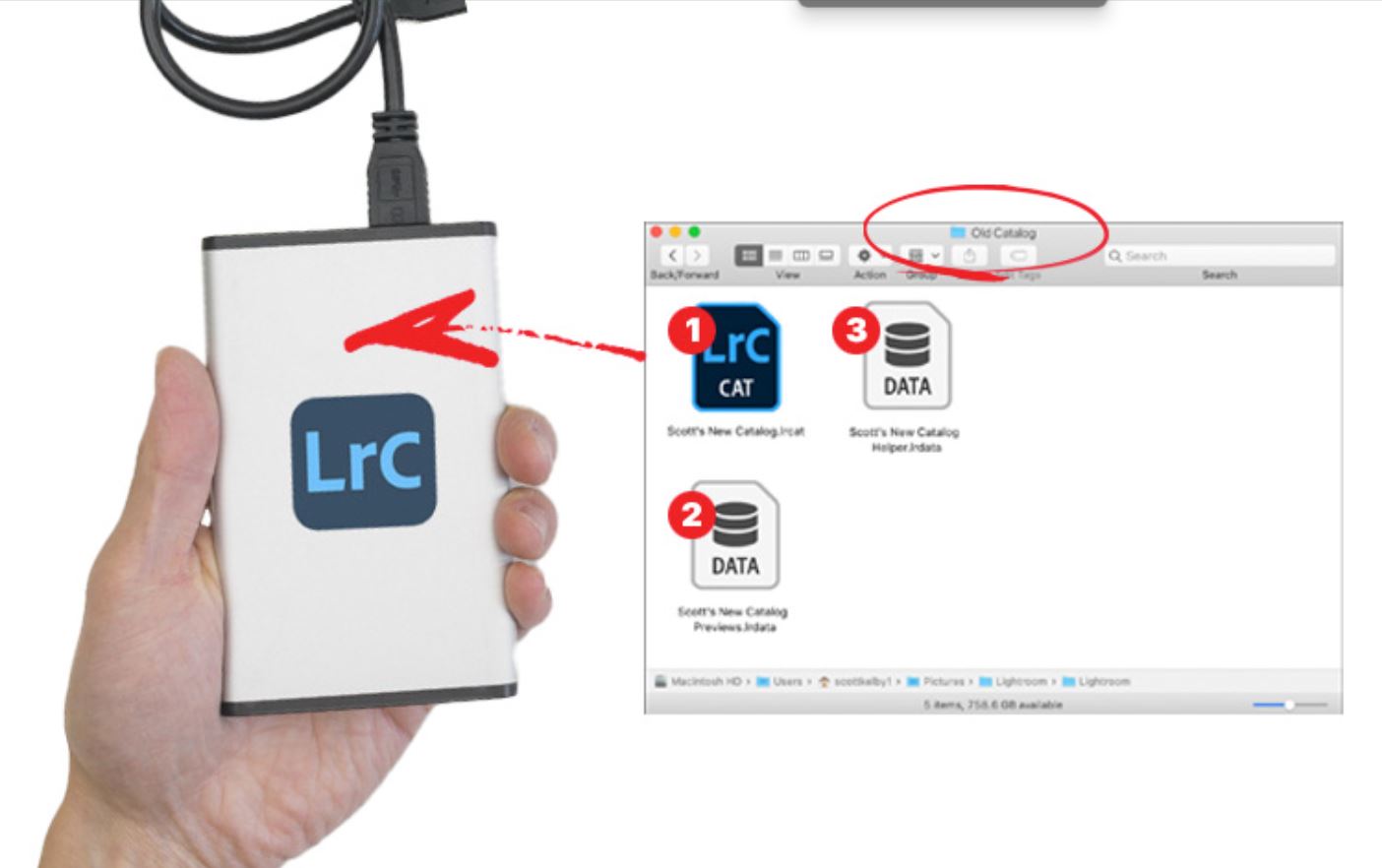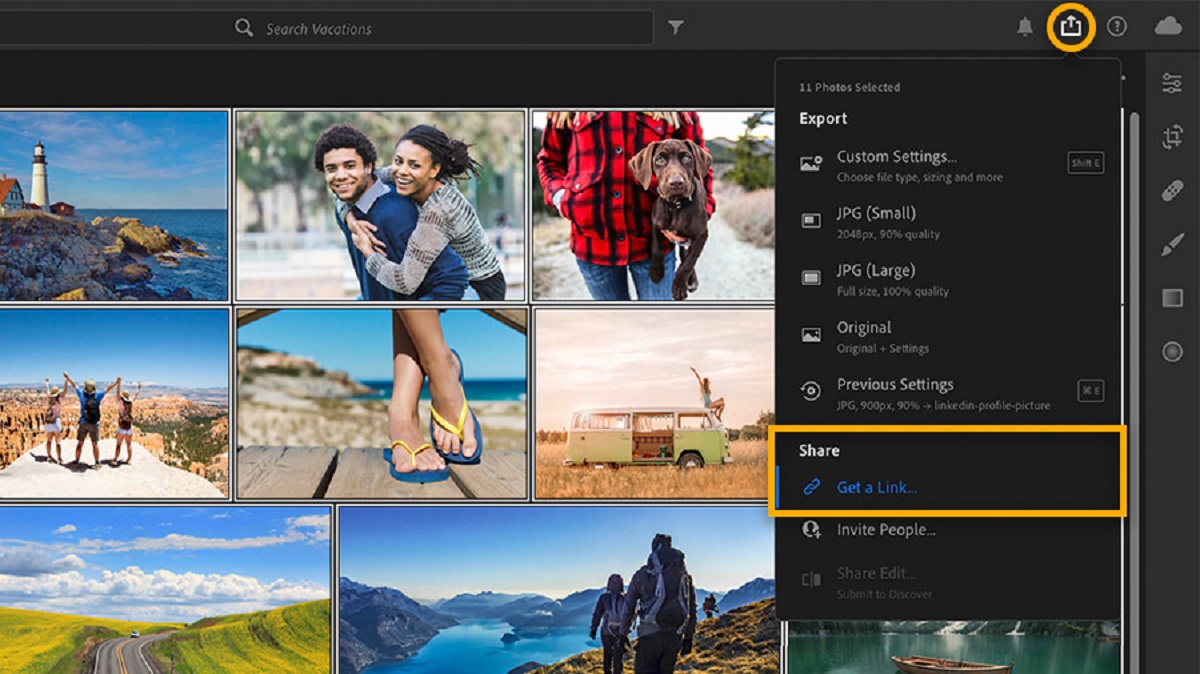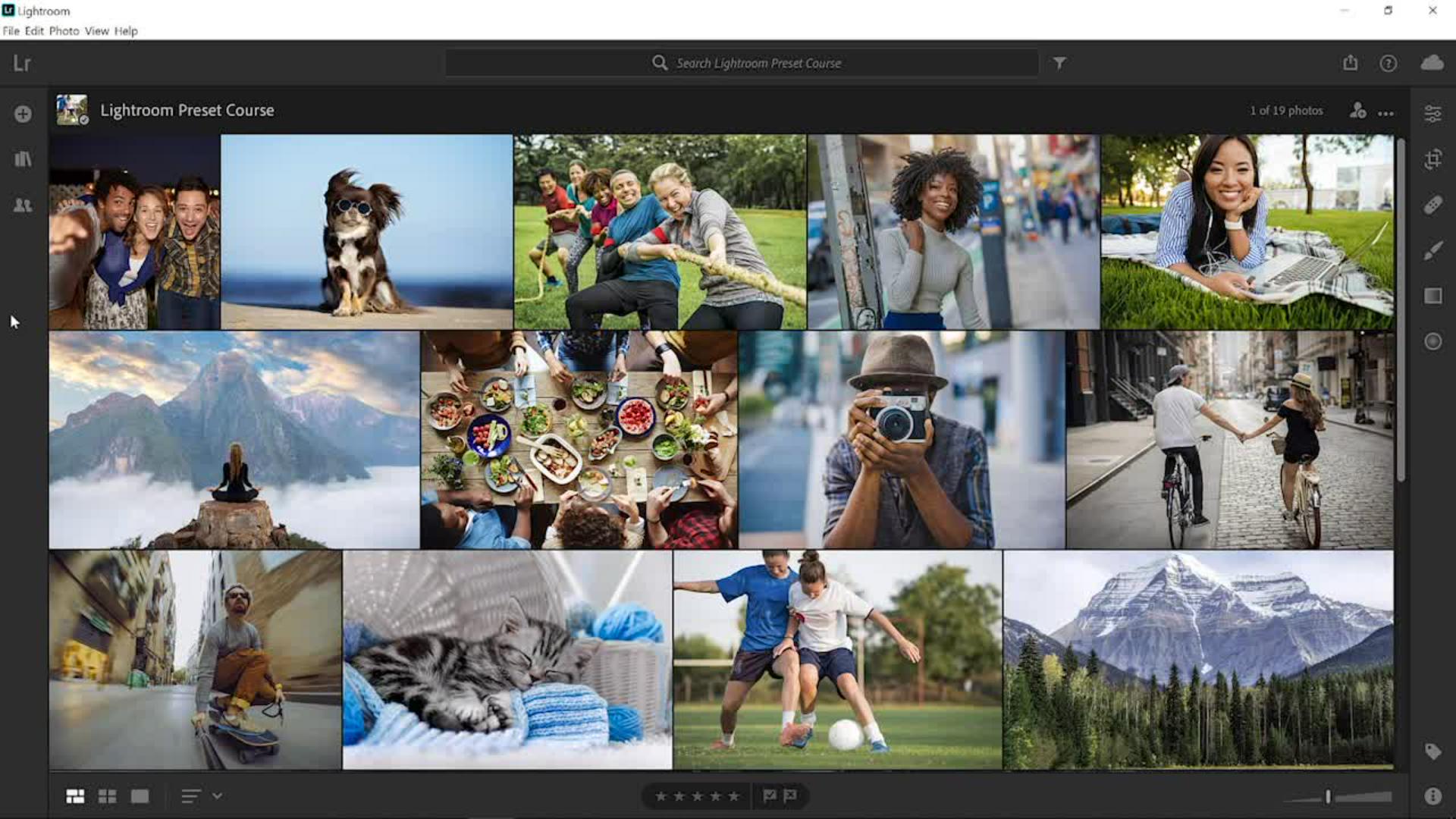Introduction
Welcome to the exciting world of Lightroom! If you are a photography enthusiast or a professional photographer, you are likely familiar with Adobe Lightroom, a powerful photo editing software that offers a wide range of tools and features to enhance and transform your images.
One important aspect to consider when using Lightroom is the amount of RAM (Random Access Memory) your computer has. RAM plays a crucial role in the overall performance of Lightroom, as it determines how smoothly the software functions and how quickly it can process your edits.
In this article, we will explore the significance of RAM for Lightroom and discuss the recommended amount of RAM for optimal performance. We will also delve into the minimum system requirements for Lightroom, how to check your computer’s current RAM, and whether or not you need to upgrade your RAM.
Upgrading your RAM can make a noticeable difference in the speed and efficiency of Lightroom, allowing you to work seamlessly with large files and complex edits. We will also cover some tips and tricks to optimize Lightroom performance, even if you have limited RAM.
So, if you’re ready to take your Lightroom experience to the next level, let’s dive into the world of RAM and discover how it can revolutionize your photo editing workflow in Lightroom!
What is RAM and why is it important for Lightroom?
RAM, or Random Access Memory, is a critical component of your computer’s hardware. It is a form of temporary storage that allows your computer to quickly access and retrieve data while running various programs, including Lightroom. Think of RAM as your computer’s short-term memory, which actively stores the data that your computer is currently using.
When you open Lightroom and start working on your photos, the software loads different components into the RAM, such as the catalog, previews, previews cache, and editing adjustments. The more RAM your computer has, the more information and processes it can store in its memory, which ultimately results in improved performance and responsiveness.
Lightroom is known for its extensive set of features and capabilities, ranging from organizing and managing your photo library to applying precise edits and adjustments. The software relies heavily on RAM to handle these tasks efficiently. With sufficient RAM, Lightroom can load and process large files, access the necessary tools, and apply adjustments in real-time, creating a seamless editing experience.
Insufficient RAM can lead to various performance issues in Lightroom. For example, if you have a small amount of RAM, Lightroom might struggle to respond quickly when navigating between images, making adjustments, or exporting files. This can result in sluggishness, lag, and even crashes during resource-intensive tasks.
With the rapid advancement of digital cameras, the size and complexity of image files have also increased significantly. Professional photographers often work with high-resolution RAW files that require a substantial amount of RAM to handle smoothly. Insufficient RAM can limit your ability to work with these larger files efficiently, affecting your productivity and overall editing experience.
RAM is also important for multitasking. If you frequently switch between Lightroom and other resource-intensive software, such as Photoshop or video editing tools, having more RAM allows your computer to handle the demands of these programs simultaneously without a noticeable drop in performance.
In essence, RAM is crucial for Lightroom because it determines how well the software can handle the load of processing and manipulating images. With ample RAM, you can expect faster import and export speeds, smoother editing, and an overall improved user experience in Lightroom.
Minimum System Requirements for Lightroom
Before we dive into the recommended amount of RAM for Lightroom, let’s first understand the minimum system requirements set by Adobe for running the software smoothly. While these requirements may vary depending on the specific version of Lightroom you are using, here are the general guidelines:
- Operating System: Lightroom is designed to work with both Windows and macOS. The minimum supported versions include Windows 10 (64-bit) or macOS 10.14 (Mojave) or later.
- Processor: Lightroom requires a multicore Intel processor with 64-bit support. For Windows, Intel or AMD processors with SSE4.2 support are recommended.
- RAM: Adobe recommends a minimum of 8 GB of RAM for Lightroom. However, keep in mind that this is the bare minimum requirement, and if you work with large files or have multiple programs running simultaneously, a higher amount of RAM will provide a better user experience.
- Hard Disk Space: Lightroom requires a minimum of 2 GB of available storage space on your computer. However, it is important to note that this space is solely for the installation of the software, and additional space will be needed for storing your photo library and previews.
- Display: Lightroom requires a monitor with a resolution of 1024 x 768 pixels or higher. Additionally, a GPU (Graphics Processing Unit) with OpenGL 3.3 or later support is recommended for optimal GPU acceleration.
These are the basic system requirements for running Lightroom. However, it’s worth noting that meeting just the minimum requirements may limit the performance and capabilities of the software. If you plan to work with larger files, perform complex edits, or multitask with other demanding applications, it is advisable to exceed the minimum requirements, particularly when it comes to RAM.
Now that we understand the minimum system requirements, let’s explore the factors that influence how much RAM you need for Lightroom.
Factors to Consider When Determining How Much RAM You Need for Lightroom
When determining the amount of RAM you need for Lightroom, several factors come into play. Understanding these factors will help you make an informed decision and ensure optimal performance while working with the software. Here are some key considerations:
Size and Complexity of Image Files:
If you work primarily with smaller JPEG files, the amount of RAM required may be lower compared to handling larger RAW files. RAW files contain more data and require additional processing power, so having more RAM will enable Lightroom to handle these files more efficiently.
Multiple Programs and Tasks:
If you tend to multitask while using Lightroom, such as running other editing software simultaneously or working with multiple applications in the background, you will benefit from having more RAM. This allows your computer to handle the memory demands of both Lightroom and other programs, ensuring smooth performance across the board.
Size of Photo Library:
The size of your photo library also plays a role in determining the amount of RAM needed for Lightroom. If you have a large collection of photos, Lightroom will need more memory to process and manage the catalog, previews, and edits for each image. Consider the size of your photo library and the frequency with which you access and edit images to estimate the necessary RAM capacity.
Complexity of Edits:
If you frequently apply complex edits and adjustments to your photos, such as extensive retouching, advanced color grading, or using multiple layers and filters, having ample RAM becomes even more crucial. These resource-intensive tasks require more memory to process and preview the changes in real-time, ensuring a smoother editing experience.
Exporting and Rendering:
If you often export your edited photos in high resolution or perform batch exports, having more RAM can significantly speed up the process. Lightroom uses RAM to buffer and process the exported files, so increasing the RAM allocation will result in faster exporting times.
Considering these factors will help you determine the amount of RAM you need for Lightroom. While the recommended minimum of 8 GB is a starting point, if your workflow involves working with large files, multitasking extensively, or performing complex edits, it is advisable to upgrade to 16 GB or higher for smoother performance.
Next, let’s explore how you can check the amount of RAM currently installed on your computer.
How to Check How Much RAM You Currently Have on Your Computer
Before considering whether or not to upgrade your RAM for Lightroom, it’s essential to determine how much RAM is currently installed on your computer. Here are a few simple steps to help you check your RAM:
Windows:
- Open the Task Manager by pressing Ctrl + Shift + Esc or right-clicking on the taskbar and selecting “Task Manager.”
- In the Task Manager window, click on the Performance tab.
- Under the “Memory” section, you will see the current usage and the total installed memory (RAM) in gigabytes (GB).
macOS:
- Click on the Apple menu in the top-left corner of your screen and select About This Mac.
- In the Overview tab, you will find the total amount of memory (RAM) installed on your computer displayed next to “Memory.”
By following these steps, you will be able to determine the current amount of RAM in your system. Take note of this information as you evaluate whether or not an upgrade is necessary for optimal Lightroom performance.
Next, let’s explore how to determine if you need to upgrade your RAM for better Lightroom performance.
How to Determine If You Need to Upgrade Your RAM for Better Lightroom Performance
Now that you know the amount of RAM currently installed on your computer, it’s time to assess whether or not you need to upgrade your RAM for better Lightroom performance. Here are a few factors to consider:
Performance Issues:
Are you experiencing any performance issues while working with Lightroom? Common symptoms of insufficient RAM include slow response times, sluggish navigation between images, delays when applying edits, or extended export times. If you frequently encounter these performance issues, it’s a good indication that you may need to upgrade your RAM.
Room for Improvement:
Even if you don’t currently experience significant performance issues, it’s worth considering if there is room for improvement. Take note of how Lightroom performs when handling larger files, applying intensive edits, or working on multiple tasks simultaneously. If you notice any slowdowns or delays, upgrading your RAM can help provide a smoother and more efficient editing experience.
Future-Proofing:
Consider your future needs and workflow. If you plan to work with higher-resolution files, increase the complexity of your edits, or expand your photo library, having more RAM will ensure your system can handle the demands of future projects. Upgrading your RAM now can save you from potential frustrations and limitations down the line.
Budget and Compatibility:
Consider your budget and the compatibility of your computer. Check the maximum RAM capacity supported by your computer’s motherboard and ensure any potential RAM upgrade is compatible with your system. Also, take into account the cost of the RAM upgrade and weigh it against the potential benefits it will bring to your Lightroom performance.
By evaluating these factors, you can determine if upgrading your RAM is necessary to achieve better performance in Lightroom. If you experience performance issues, notice room for improvement, or want to future-proof your system, upgrading your RAM can significantly enhance your Lightroom editing experience.
Next, let’s explore the recommended amount of RAM for Lightroom and the benefits of having more RAM.
How Much RAM Is Recommended for Lightroom?
When it comes to the recommended amount of RAM for Lightroom, Adobe suggests a minimum of 8 GB. However, it’s important to note that this is the bare minimum requirement, and the optimal amount of RAM will depend on your specific needs and workflow.
For most users, especially those who work with moderate-sized image files and perform basic to intermediate edits, 16 GB of RAM should provide a satisfactory level of performance. This amount of RAM allows for smooth navigation, quick rendering of previews, and efficient export times.
However, if you frequently work with larger RAW files, perform complex edits, or multitask heavily, then it’s advisable to consider upgrading to 32 GB or even 64 GB of RAM. This higher RAM capacity can handle more demanding editing tasks and ensure a seamless experience, even with resource-intensive operations.
Keep in mind that while increasing the RAM capacity can improve Lightroom’s performance, it’s not the only factor to consider. Other components of your computer, such as the processor, graphics card, and storage drive, also play a role in overall performance. It’s important to assess your entire system and ensure that it meets or exceeds the recommended specifications for a smooth Lightroom experience.
Additionally, it’s worth mentioning that the amount of RAM you ultimately choose should be within your budget and compatible with your computer’s hardware limitations. Upgrading your RAM should be seen as an investment in enhancing your editing workflow and productivity.
Now that we’ve explored the recommended amount of RAM for Lightroom, let’s discuss the benefits of having more RAM.
Benefits of Having More RAM for Lightroom
Having more RAM in your computer can provide several significant benefits when it comes to using Lightroom. Here are some advantages of upgrading your RAM:
Improved Performance:
More RAM allows Lightroom to handle larger image files and complex editing tasks with ease. It reduces lag, improves the responsiveness of the software, and minimizes the time it takes to generate previews, render adjustments, and apply filters. With increased performance, you can work more efficiently and smoothly in Lightroom.
Faster Import and Export Speeds:
RAM plays a crucial role in the import and export process in Lightroom. Having more RAM allows for faster buffering and processing of images during import and smoother rendering and exporting of edited photos. This enables you to complete your projects more quickly, especially if you frequently work with a high volume of images or need to deliver files on tight deadlines.
Seamless Editing Experience:
Working with larger RAW files or applying multiple adjustments and effects can be resource-intensive for Lightroom. Insufficient RAM can result in slow response times, stuttering previews, and delayed adjustments. With more RAM, Lightroom can allocate more memory to handle these complex tasks, ensuring a seamless editing experience without interruptions.
Ability to Multitask:
Having more RAM allows you to work with Lightroom alongside other applications simultaneously without sacrificing performance. If you frequently switch between Lightroom, Photoshop, or other resource-intensive software, upgrading your RAM ensures smoother multitasking and prevents slowdowns or crashes when juggling multiple programs concurrently.
Future-Proofing:
As technology advances and file sizes continue to increase, having more RAM will future-proof your computer for upcoming Lightroom updates and requirements. By investing in a higher RAM capacity now, you can ensure that your system remains capable of handling larger files, more complex edits, and evolving editing techniques.
Remember, while upgrading your RAM can significantly enhance Lightroom’s performance, it’s important to consider other factors like your processor, graphics card, and storage drive. A well-rounded system with ample RAM can provide an optimal environment for editing and help unleash the full potential of Lightroom’s capabilities.
Now that we understand the benefits of having more RAM for Lightroom, let’s explore how to upgrade your RAM for this purpose.
How to Upgrade Your RAM for Lightroom
Upgrading your RAM for Lightroom is a relatively straightforward process. Here are the steps to follow:
1. Determine the Compatibility:
Check the specifications of your computer to determine the type and maximum capacity of RAM it supports. You can find this information in your computer’s documentation or by visiting the manufacturer’s website.
2. Purchase the Right RAM Modules:
Once you know the type and capacity of RAM your computer supports, purchase the appropriate RAM modules. Make sure to choose modules from reputable brands and consider factors such as speed and latency for optimal performance.
3. Power Off and Open Your Computer:
Before installing the new RAM, shut down your computer and unplug it from the power source. Open your computer’s case or access panel, following the manufacturer’s instructions. Use anti-static precautions to avoid damage to the components.
4. Insert the RAM Modules:
Locate the RAM slots on your computer’s motherboard. Gently insert the RAM modules into the slots, ensuring they are properly aligned with the notches. Apply slight pressure until the modules are fully seated and the locking mechanisms engage. Be careful not to use excessive force.
5. Power On and Confirm the RAM Upgrade:
Close the computer case or access panel, plug in the power cord, and power on your computer. Once it boots up, confirm that the RAM upgrade was successful. You can do this by checking the system information or using the steps mentioned earlier to inspect the new RAM capacity.
6. Configure BIOS Settings (if necessary):
In some cases, you may need to access your computer’s BIOS (Basic Input/Output System) to ensure that the new RAM is recognized and configured correctly. Refer to your computer’s documentation for instructions on accessing the BIOS settings.
Remember to handle the RAM modules with care and avoid touching the gold contacts. If you are unsure about the installation process, consult a professional technician or refer to the instructions specific to your computer model.
By upgrading your RAM, you can harness the full potential of Lightroom’s performance capabilities and enjoy a smoother and more efficient editing experience. Now that you’ve upgraded your RAM, let’s explore some tips for optimizing Lightroom performance, even with limited RAM.
Tips for Optimizing Lightroom Performance Even with Limited RAM
If you have limited RAM in your computer, there are several ways you can optimize Lightroom’s performance to ensure a smoother editing experience. Here are some helpful tips:
1. Close Unnecessary Programs and Background Processes:
Before launching Lightroom, close any unnecessary programs and background processes that may consume RAM. This will free up memory for Lightroom and allow it to run more efficiently.
2. Increase Lightroom’s Cache Size:
You can allocate more hard drive space for Lightroom’s cache, which helps improve its performance. In Lightroom’s Preferences, go to the File Handling tab and increase the Camera Raw Cache Size to a higher value. This can reduce the amount of direct RAM usage, especially when previewing or editing images.
3. Optimize Lightroom Catalog Settings:
Regularly optimize your Lightroom catalog to keep it running smoothly. In the Catalog Settings, navigate to the File Handling tab and set the Preview Quality to a lower value, such as Standard or Low. This reduces the memory required for loading and displaying previews in Lightroom.
4. Use Smart Previews:
Smart Previews are smaller, compressed versions of your original photos. When working with limited RAM, generating and using Smart Previews can help alleviate the strain on memory. Enable Smart Previews in the Import dialog or create them for existing photos in the Library module. This way, Lightroom can work with these smaller files while retaining most of the editing capabilities.
5. Perform Basic Edits First:
If you’re experiencing performance issues when applying complex edits, try performing basic adjustments first. This reduces the demand on RAM and can help maintain a smoother editing experience. Once you’ve finished basic edits, proceed to more resource-intensive adjustments.
6. Minimize the Number of Open Images:
Having too many images open simultaneously can significantly impact Lightroom’s performance, especially with limited RAM. Close unnecessary images or use the “Solo Mode” in Lightroom’s Develop module to work on one image at a time, reducing the strain on memory.
7. Optimize Lightroom’s Preferences:
Review Lightroom’s Preferences and adjust settings to optimize performance. For example, disable unnecessary features like face detection or location data if you don’t use them. Consider reducing the number of undos and history states to conserve memory usage.
8. Manage Your Photo Library:
Periodically declutter and organize your photo library. Remove any unnecessary files or duplicates to free up storage space and reduce the overall demand on memory when working in Lightroom.
By implementing these tips, you can optimize Lightroom’s performance, even with limited RAM. They help reduce the strain on memory and enable you to continue editing your photos efficiently. Remember, upgrading your RAM in the future can further enhance the software’s performance if needed.
Now that we’ve explored optimizing Lightroom’s performance with limited RAM, let’s conclude this article.
Conclusion
In conclusion, RAM plays a crucial role in the performance of Adobe Lightroom, a powerful photo editing software. While the minimum system requirement for Lightroom is 8 GB of RAM, it is recommended to have more, especially for users who work with larger image files, perform complex edits, or multitask heavily.
Upgrading your RAM offers several benefits:
Improved performance, faster import/export speeds, a seamless editing experience, the ability to multitask without sacrificing performance, and future-proofing your computer for upcoming advancements in Lightroom and file sizes. These advantages can greatly enhance your productivity and overall editing experience.
When upgrading your RAM, ensure compatibility with your system and consider factors like budget and the specific needs of your workflow. It is also essential to optimize Lightroom’s performance, even with limited RAM, by closing unnecessary programs, increasing the cache size, using Smart Previews, and managing your catalog and preferences effectively.
By following these guidelines, you can get the most out of Lightroom, even if you have limited RAM. However, if you consistently encounter significant performance issues or anticipate more demanding editing requirements in the future, upgrading your RAM to a higher capacity is recommended.
Remember, RAM is just one component of your computer’s overall performance. It is essential to ensure that other components like the processor, graphics card, and storage drive meet or exceed the recommended specifications to achieve optimal performance in Lightroom.
Now that you have a better understanding of RAM’s importance for Lightroom, its recommended capacity, and tips for optimizing performance, you can make an informed decision about upgrading your RAM and enjoy a smoother and more efficient editing workflow in Adobe Lightroom.

























